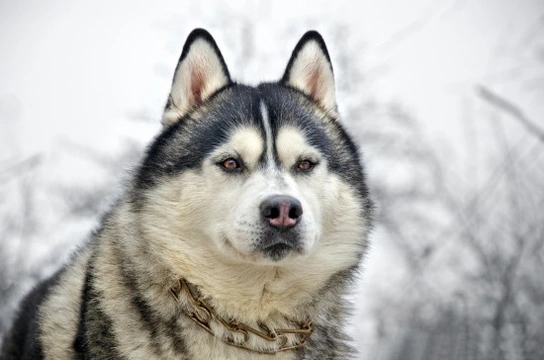
The Siberian Husky and its history with the Chukchi people
The Siberian Husky hails from Siberia in Russia, historic home to the Chukchi people who are native to the area. Siberia was, and in many ways, remains closed off from the rest of the world in a lot of senses, due to its geographical remoteness and cold, harsh climate. This means that the Siberian Husky dog breed, which was selectively bred and perfected by the Chukchi people, maintains its breed origins and purity almost perfectly up until the present day.
When the Siberian Husky began to grow in popularity in other areas of the world, the breed and its purity of origins came to the attention of the world’s major Kennel Clubs and breed registries, when the Chukchi people were recognised for their efforts in selective breeding and how successful this had been.
The Siberian Husky’s origins hail from just two dog types; the Laika, an ancient breed that is also native to Siberia, and Spitz dogs that also resided within the region.
If you are interested in the Siberian Husky’s history, and how the breed came to be, read on for some more information on the Siberian Husky and its origins with the Chukchi people.
Who are the Chukchi people?
The Chukchi people are indigenous to the Chuckchi peninsula, between the Chukchi sea and the Bering sea. This land falls within modern-day Siberia in Russia, however, the Chukchi people also have a language and culture all of their own. Originally nomadic hunter-gatherers, the Chukchi today are rather more settled in individual areas, but still rely upon the use of sled dogs such as the Siberian Husky to help them to traverse the frozen expanses of land within Siberia.
Chukchi and sled-dog breeding
The Chukchi people bred the Siberian Husky as part of their aim of producing the ultimate sled-dog that would perfectly suit their own very specific geographical requirements. They needed dogs that had a strong pack mentality and were able to work well in a team, as well as having extreme endurance and stamina to run for long periods of time. They needed both independence and the ability to follow orders, and of course, the hardiness and robustness to keep warm and well in freezing weather.
As a result of these requirements, the Laika dog was cross-bred selectively with Spitz dogs from the region, and fine-tuned and perfected without any other outside influences to create the Siberian Husky that we know today.
How old is the Siberian Husky breed?
Since the large-scale analysis of dog breed DNA has been undertaken with the aim of building up a worldwide database, a lot of interesting information has been revealed about the origins of the Siberian Husky!
The Siberian Husky is now known to be one of the 14 most ancient dog breeds in the world, with a documented history among the Chukchi people going back at least 3,000 years. However, archaeological evidence suggests that the breed may be older still; ancient Chukchi burial sites that date back more than 10,000 years have been shown to hold the remains of Laika-type dogs, the fore-runners to the modern Siberian Husky breed.
Laika dogs and their contribution to Siberian Husky ancestry
It is widely recognised that the Laika-type dog is the main recognised ancestor of the Siberian Husky, and these dogs are known to have lived alongside of the Chukchi people for at least a millennia. While the term “Laika” in the Russian language simply means “barker” or “a dog that barks,” in breed terms, there are six distinct Laika breeds, all of which are commonly used as sled dogs.
Still extant today, two particular breeds of Laika remain popular within Eastern and Western Siberia as sled dogs and guard dogs, and both of these breeds bear a strong physical resemblance to our modern Siberian Husky.
Siberian Huskies in more recent history
During the 19th century, the Chukchi people themselves almost died out as a result of serious famine and a lack of resources within the region, and both people and dogs starved to death in vast numbers. Sled dogs were ultimately killed for their meat when the famine was at its peak, devastating the available breed pool of Siberian Huskies and Laika-type dogs and leaving very few dogs remaining when the famine reached its natural conclusion.
Once the famine had passed, the remaining sled dogs of both Husky and Laika origins were cross-bred with other regional dogs such as the Tungus Spitz, in order to build the breed lines back up again.
The Spitz family of dogs worldwide encompasses a large range of different individual breeds, such as the Samoyed and Alaskan Malamute among others, as well as the Siberian Husky. Siberian Huskies were first exported from Siberia in 1908, with nine dogs being imported to America for use as sled dogs, and this is where the breed worldwide really spread and took off, until the point we have reached today, with the Siberian Husky being an instantly recognisable and very popular dog all across the globe.



